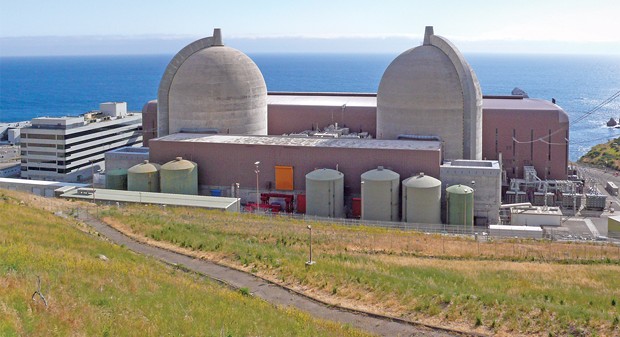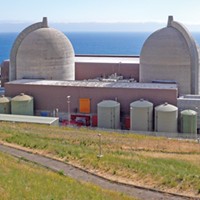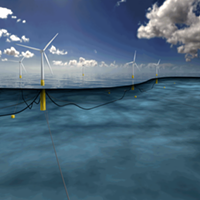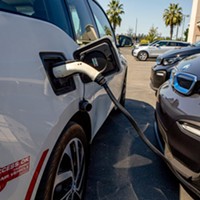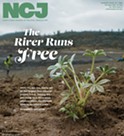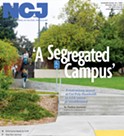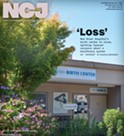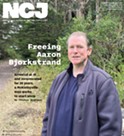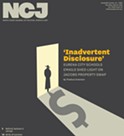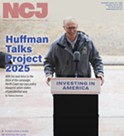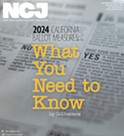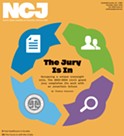Tuesday, October 1, 2024
Conflicted RCEA Board Passes on Nuclear Power
Posted By Thadeus Greenson @ThadeusGreenson on Tue, Oct 1, 2024 at 4:06 PM
After a lengthy discussion that was at times circular, a divided Redwood Coast Energy Authority failed to reach a decision on whether to accept an offer of free nuclear power from the Diablo Canyon Power Plan in San Luis Obispo.
By default, the board’s inaction means the agency will pass on the state-mandated offer for an allocation of free nuclear energy that is being paid for by all electricity customers in the state, including RCEA’s own.
The issue stems from years-old state discussion of what to do with its last operating nuclear power plan, which Pacific Gas and Electric Co. had decided to close back in 2018 before statewide power shortages in 2020 and a push for a greener grid prompted California Gov. Gavin Newsom to offer the company a $1.4 billion loan to support Diablo Canyon’s continued operation through at least 2030.
As a result of the deal — and with the state now having a larger portfolio of electricity than previously forecast — PG&E is making allotments of power from its Diablo Canyon reactors available to all California Public Utilities Commission jurisdictional entities, of which RCEA is one. And while the energy would come free of charge to the entities, their ratepayers are already funding the plant’s continued operations through a fee for public purpose programs.
So when the conversation came before the RCEA board last week, staff presented three options: The board could refuse the power, which would be in keeping with a long held policy to eschew nuclear power with limited exceptions; it could accept the power and use the estimated $500,000 in savings to reduce its projected $9.5 million deficit for 2025; or it could accept the power and use the savings to further green its energy portfolio, resulting in a projected reduction of about 23 pounds of greenhouse gas emissions.
Public comment on the agenda item was unanimously opposed to accepting nuclear energy, with about a half-dozen people addressing the board.
“I think it would be reprehensible of RCEA to accept nuclear power into the mix of quote-unquote clean energy that we would accept,” said Kathleen Marshall, who identified herself as a 45-year Humboldt County resident.
Dave Ryan noted that power producers still haven’t figured out what to do with spent nuclear fuel, likening nuclear power to flying a plane whose landing gear hasn’t been invented yet.
“It’s a mess,” he said. “It’s a really messy form of energy. … It’s a good prohibition you’ve got. Stick to it.”
Michael Welch, a member of Redwood Alliance, which he credited with helping instigate the permanent closure of the Humboldt Bay Power Plant, voiced similar opposition to RCEA’s accepting free nuclear-generated electricity.
“Nuclear-made energy is neither clean nor green, and it produces significant amounts of the most long-lasting and dangerous waste to humanity,” he said. “Any amount of saying yes to nuclear energy only bolsters the efforts of the nuclear industry.”
But when the matter came back to the board, it was apparent some saw the issue as more complex.
Director Scott Bauer, who’d previously voiced opposition to accepting the nuclear offer at the board’s August meeting, said he’d spent some time looking up how long it takes nuclear fuel to break down.
“Uranium 235 supposedly has a half-life of 700 million years, which is about 20 million generations of human beings,” he said. “Plutonium 239 is 24,000 years, which luckily is only 800 generations. … Our responsibility should be to not accept it. I just can’t in good faith do that to my kids.”
But Director Skip Jorgensen said he was reminded of conversations the board had earlier in the year cutting programs and scaling back its green energy goals in the face of large projected budget deficit.
“I’m concerned that at some point down the line we will be considering an increase in rates that will make us less competitive,” he said, adding that the long-term viability of RCEA could even come into question.
RCEA Interim Executive Director Eileen Verbeck said she shared those concerns, but added that the organization does have sizeable reserves and the ability to revisit whether to accept the nuclear power allocation annually for the next several years, with the allocations expected to be larger in the coming years.
“We’re not on the cliff, yet,” she said.
After Jorgensen indicated he favored accepting the allocation for the resulting cost savings, Director Elise Scafani suggested RCEA could accept the nuclear energy allocation and use the projected $500,000 in cost savings to invest in local renewable energy projects.
“What can we do with that reality to make the overall picture going forward improve?” she asked. “We can’t stop the nuclear energy from being generated but we can take that savings and do something really good for our community.”
Mike Wilson, an alternate sitting in for Director Natalie Arroyo, who was absent, expressed sympathy for Jorgensen’s budget concerns, saying things can “get pretty squirrely” for an agency not meeting its reserve goals, saying those conversations are often abstract until they are not. He also said it’s important for folks to remember that most of the electricity used in Humboldt County comes from fracked natural gas burnt at the local generating station. Ultimately, he said, the decision to pass on nuclear power would be one of messaging, and he was unsure what impact it would have.
“If we’re the only [community choice aggregator] that makes this choice to do this, I’m not sure it will make much of an impact at all,” he said, wondering aloud if it wouldn’t be better to accept the allocation and use $100,000 of the savings on direct lobbying efforts to close Diablo Canyon down.
Wilson later said that because RCEA customers are already paying for the continued operations of the Diablo Canyon, declining the allocation would essentially be “asking our customers to pay for us to make this statement.”
After a bit more discussion, Bauer made the motion that RCEA decline the offered allotment from Diablo Canyon, but it died for lack of a second. Scafani then made the motion that the board accept the allocation and direct staff to come back with plans to invest the $500,000 in projected savings to local renewable energy projects and Jorgensen seconded. The motion needed five votes to pass, but was supported by only Jorgensen and Scafani.
With that, the matter died, though it won’t be long before it resurfaces. Staff plans to bring back a policy platform update to the board in the coming months, which could lead the board to reconsider RCEA’s existing stance on nuclear power, either by taking a stronger advocacy position against the continued operation of Diablo Canyon or loosening its prohibition on accepting nuclear power. Then, depending on the board’s policy platform decisions, the board could consider accepting the 2026 allotment from Diablo Canyon in the fall of 2025.
By default, the board’s inaction means the agency will pass on the state-mandated offer for an allocation of free nuclear energy that is being paid for by all electricity customers in the state, including RCEA’s own.
The issue stems from years-old state discussion of what to do with its last operating nuclear power plan, which Pacific Gas and Electric Co. had decided to close back in 2018 before statewide power shortages in 2020 and a push for a greener grid prompted California Gov. Gavin Newsom to offer the company a $1.4 billion loan to support Diablo Canyon’s continued operation through at least 2030.
As a result of the deal — and with the state now having a larger portfolio of electricity than previously forecast — PG&E is making allotments of power from its Diablo Canyon reactors available to all California Public Utilities Commission jurisdictional entities, of which RCEA is one. And while the energy would come free of charge to the entities, their ratepayers are already funding the plant’s continued operations through a fee for public purpose programs.
So when the conversation came before the RCEA board last week, staff presented three options: The board could refuse the power, which would be in keeping with a long held policy to eschew nuclear power with limited exceptions; it could accept the power and use the estimated $500,000 in savings to reduce its projected $9.5 million deficit for 2025; or it could accept the power and use the savings to further green its energy portfolio, resulting in a projected reduction of about 23 pounds of greenhouse gas emissions.
Public comment on the agenda item was unanimously opposed to accepting nuclear energy, with about a half-dozen people addressing the board.
“I think it would be reprehensible of RCEA to accept nuclear power into the mix of quote-unquote clean energy that we would accept,” said Kathleen Marshall, who identified herself as a 45-year Humboldt County resident.
Dave Ryan noted that power producers still haven’t figured out what to do with spent nuclear fuel, likening nuclear power to flying a plane whose landing gear hasn’t been invented yet.
“It’s a mess,” he said. “It’s a really messy form of energy. … It’s a good prohibition you’ve got. Stick to it.”
Michael Welch, a member of Redwood Alliance, which he credited with helping instigate the permanent closure of the Humboldt Bay Power Plant, voiced similar opposition to RCEA’s accepting free nuclear-generated electricity.
“Nuclear-made energy is neither clean nor green, and it produces significant amounts of the most long-lasting and dangerous waste to humanity,” he said. “Any amount of saying yes to nuclear energy only bolsters the efforts of the nuclear industry.”
But when the matter came back to the board, it was apparent some saw the issue as more complex.
Director Scott Bauer, who’d previously voiced opposition to accepting the nuclear offer at the board’s August meeting, said he’d spent some time looking up how long it takes nuclear fuel to break down.
“Uranium 235 supposedly has a half-life of 700 million years, which is about 20 million generations of human beings,” he said. “Plutonium 239 is 24,000 years, which luckily is only 800 generations. … Our responsibility should be to not accept it. I just can’t in good faith do that to my kids.”
But Director Skip Jorgensen said he was reminded of conversations the board had earlier in the year cutting programs and scaling back its green energy goals in the face of large projected budget deficit.
“I’m concerned that at some point down the line we will be considering an increase in rates that will make us less competitive,” he said, adding that the long-term viability of RCEA could even come into question.
RCEA Interim Executive Director Eileen Verbeck said she shared those concerns, but added that the organization does have sizeable reserves and the ability to revisit whether to accept the nuclear power allocation annually for the next several years, with the allocations expected to be larger in the coming years.
“We’re not on the cliff, yet,” she said.
After Jorgensen indicated he favored accepting the allocation for the resulting cost savings, Director Elise Scafani suggested RCEA could accept the nuclear energy allocation and use the projected $500,000 in cost savings to invest in local renewable energy projects.
“What can we do with that reality to make the overall picture going forward improve?” she asked. “We can’t stop the nuclear energy from being generated but we can take that savings and do something really good for our community.”
Mike Wilson, an alternate sitting in for Director Natalie Arroyo, who was absent, expressed sympathy for Jorgensen’s budget concerns, saying things can “get pretty squirrely” for an agency not meeting its reserve goals, saying those conversations are often abstract until they are not. He also said it’s important for folks to remember that most of the electricity used in Humboldt County comes from fracked natural gas burnt at the local generating station. Ultimately, he said, the decision to pass on nuclear power would be one of messaging, and he was unsure what impact it would have.
“If we’re the only [community choice aggregator] that makes this choice to do this, I’m not sure it will make much of an impact at all,” he said, wondering aloud if it wouldn’t be better to accept the allocation and use $100,000 of the savings on direct lobbying efforts to close Diablo Canyon down.
Wilson later said that because RCEA customers are already paying for the continued operations of the Diablo Canyon, declining the allocation would essentially be “asking our customers to pay for us to make this statement.”
After a bit more discussion, Bauer made the motion that RCEA decline the offered allotment from Diablo Canyon, but it died for lack of a second. Scafani then made the motion that the board accept the allocation and direct staff to come back with plans to invest the $500,000 in projected savings to local renewable energy projects and Jorgensen seconded. The motion needed five votes to pass, but was supported by only Jorgensen and Scafani.
With that, the matter died, though it won’t be long before it resurfaces. Staff plans to bring back a policy platform update to the board in the coming months, which could lead the board to reconsider RCEA’s existing stance on nuclear power, either by taking a stronger advocacy position against the continued operation of Diablo Canyon or loosening its prohibition on accepting nuclear power. Then, depending on the board’s policy platform decisions, the board could consider accepting the 2026 allotment from Diablo Canyon in the fall of 2025.
Speaking of...
Readers also liked…
more from the author
-
EPD Investigating Fatal Crash
- Sep 27, 2024
-
HumCo Fair Sees Two Horse Racing Fatalities, Sparking Concerns
- Sep 26, 2024
-
After a Years-long Spike, Humboldt’s Overdose Deaths Seeing Sharp Drop
- Sep 24, 2024
- More »
